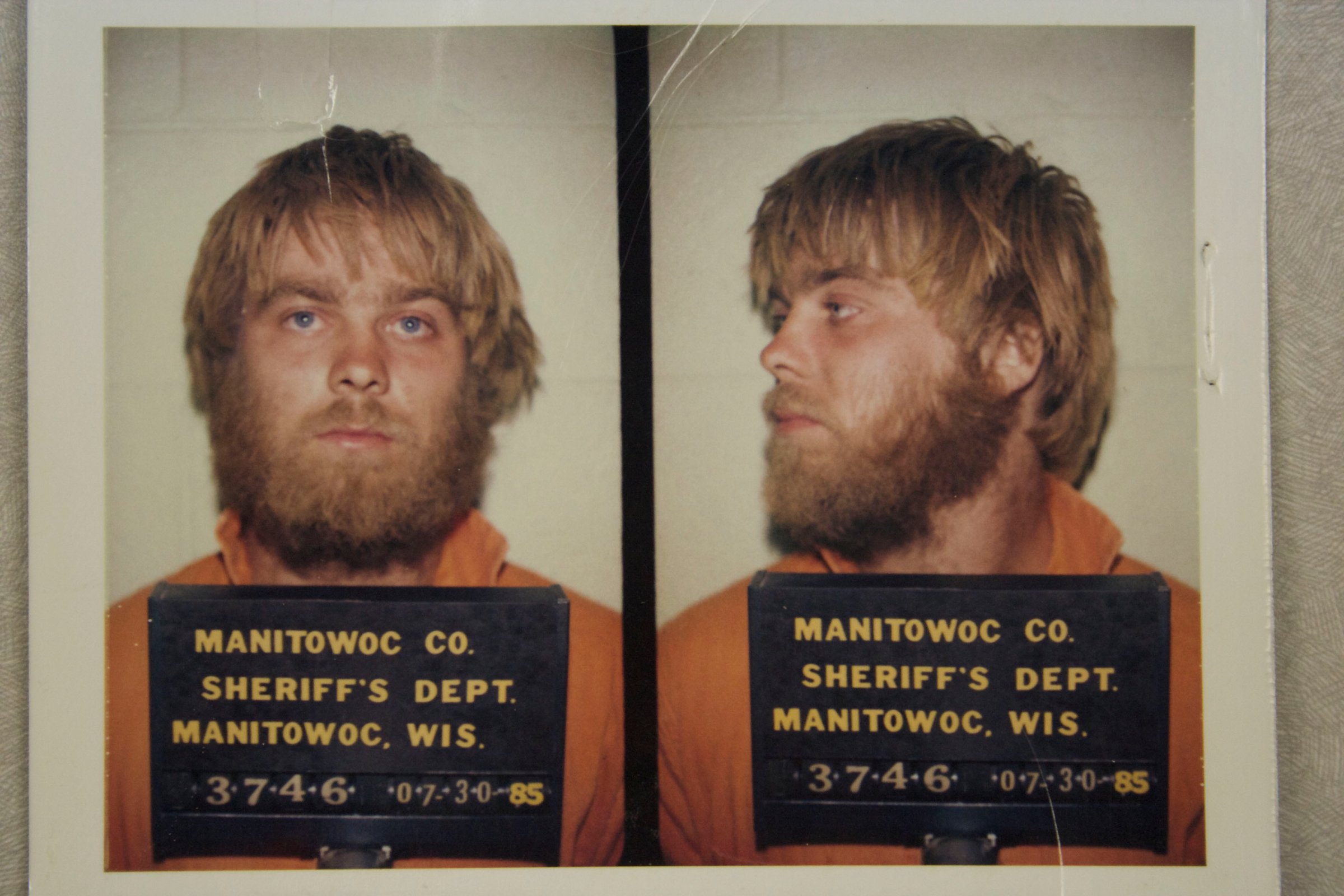
Everybody’s talking about Netflix’s new true crime documentary series, Making a Murderer.
Filmed and produced over ten years, the series examines the twist-filled case of Steven Avery, a Wisconsin man who was released from prison after being exonerated for sexual assault only to be arrested again and convicted for the murder of a young woman.
The series’ main question is: Did Avery actually commit that murder? If not, then why was he convicted of it? The 10 episode series is frightening, exhausting, and forces the viewer to question the criminal justice system.
In case you don’t have time binge watch it all, here are five things you should know about the series to not feel awkward when your friends/co-workers/everyone is talking about it:
1. Steven Avery was wrongfully convicted of sexual assault and spent 18 years in prison
Let’s start at the beginning: In 1985, Avery was arrested for sexually assaulting a woman named Penny Beerntsen – even though there wasn’t any physical evidence tying him to the crime.
The documentary portrays Avery as an easy target of law enforcement: He had past offenses, a conflict with his cousin and his family were outsiders in the community. The documentary implies that because of the suggestions from authorities, Beernsten identifies Avery as her assailant, was results in Avery being found guilty and sentenced to 32 years in prison.
While imprisoned, Avery maintained his innocence. In 2003, the Innocence Project helped exonerate Avery with DNA evidence, revealing that a man named Gregory Allen, who was ignored during the original investigation, was actually responsible.
After he was released, Avery filed a $36 million lawsuit against the county. He ultimately settled for $400,000.
2. Avery was arrested and charged with the murder of Teresa Halbach
In Oct. 2005, Teresa Halbach, an automobile photographer, went missing after taking photos of a car on the Avery Family’s property, and Steven Avery was one of the last people to see her.
Soon after, a wave of evidence came in pointing toward Avery: Avery’s blood was allegedly found inside Halbach’s car; the keys to the car were allgedly found in Avery’s room; and bone fragments are allegedly discovered in a fire pit behind his home. With all of this evidence, he was charged with her murder.
To finance his case, Avery settled his pre-existing lawsuit with the county and hired two experienced defense lawyers, Dean Strang and Jerome Buting. But in March 2007, a jury found Avery guilty of first-degree intentional homicide and he was sentenced to life in prison.
3. Brendan Dassey, Avery’s nephew, was also found guilty of Halbach’s murder
Brendan Dassey, Avery’s then-16-year-old nephew, confessed to the police that he helped Avery kidnap and murder Halbach. In his first confession, he gave a detailed account, including the statement that the two of them chained Halbach to the bed and raped her.
But the documentary aims to show that Dassey, who many in the series describe as being learning disabled, was allegedly prompted by investigators and confessed to details fed to him by authorities. Ultimately, Dassey recanted his first confession, only to confess again, this time in written form, at the behest of his appointed lawyer, who according to the documentary believed Dassey guilty and was in cahoots with the prosecution. (The lawyer, Len Kachinsky, did not respond to PEOPLE’s request for comment on the allegation.)
Dassey recanted his second confession, but he was ultimately found guilty and sentenced to life in prison.
4. Documentary aims to show that Avery might have been framed for Halbach’s murder
Here’s where things get interesting: Avery’s lawyers’ believe the Manitowoc County Sheriff’s Department framed Avery, perhaps in retaliation for his lawsuit against the county. The filmmaker seems to side with his lawyers.
The lawyers, Strang and Buting, argue that Manitowoc authorities set Avery up because of his rough past and because their jobs might be at stake due to his civil lawsuit.
Former Calumet County district attorney Ken Kratz, the special prosecutor in both the Avery and Dassey trials, told told FOX 11 News that the film was biased in favor of the defense.
“Anytime you edit 18 months’ worth of information and only include the statements or pieces that support your particular conclusion, that conclusion should be reached,” he said.
He added, “I believe there to be 80 to 90 percent of the physical evidence, the forensic evidence, that ties Steven Avery to this murder never to have been presented in this documentary.”
5. Avery and Dassey are still imprisoned and fighting to get out
Both Avery and Dassey have appealed their cases, but to little avail. At this point, Avery is acting as his own attorney because he ran out of money and is no longer entitled to a court appointed lawyer because he has exhausted all of his state appeals. He’s trying to find a way to receive a new lawyer and a new trial.
Dassey, on the other hand, has received some help from the lawyers at the Center of Wrongful Convictions of Youth, who are also trying to get him a new trial. They are asking the federal Supreme Court to review his case because, they argue, his constitutional rights were violated when his confession was allegedly coerced, and when his pre-trial lawyer allegedly worked with the prosecution.
This article originally appeared on People.com.
More Must-Reads from TIME
- Donald Trump Is TIME's 2024 Person of the Year
- Why We Chose Trump as Person of the Year
- Is Intermittent Fasting Good or Bad for You?
- The 100 Must-Read Books of 2024
- The 20 Best Christmas TV Episodes
- Column: If Optimism Feels Ridiculous Now, Try Hope
- The Future of Climate Action Is Trade Policy
- Merle Bombardieri Is Helping People Make the Baby Decision
Contact us at letters@time.com